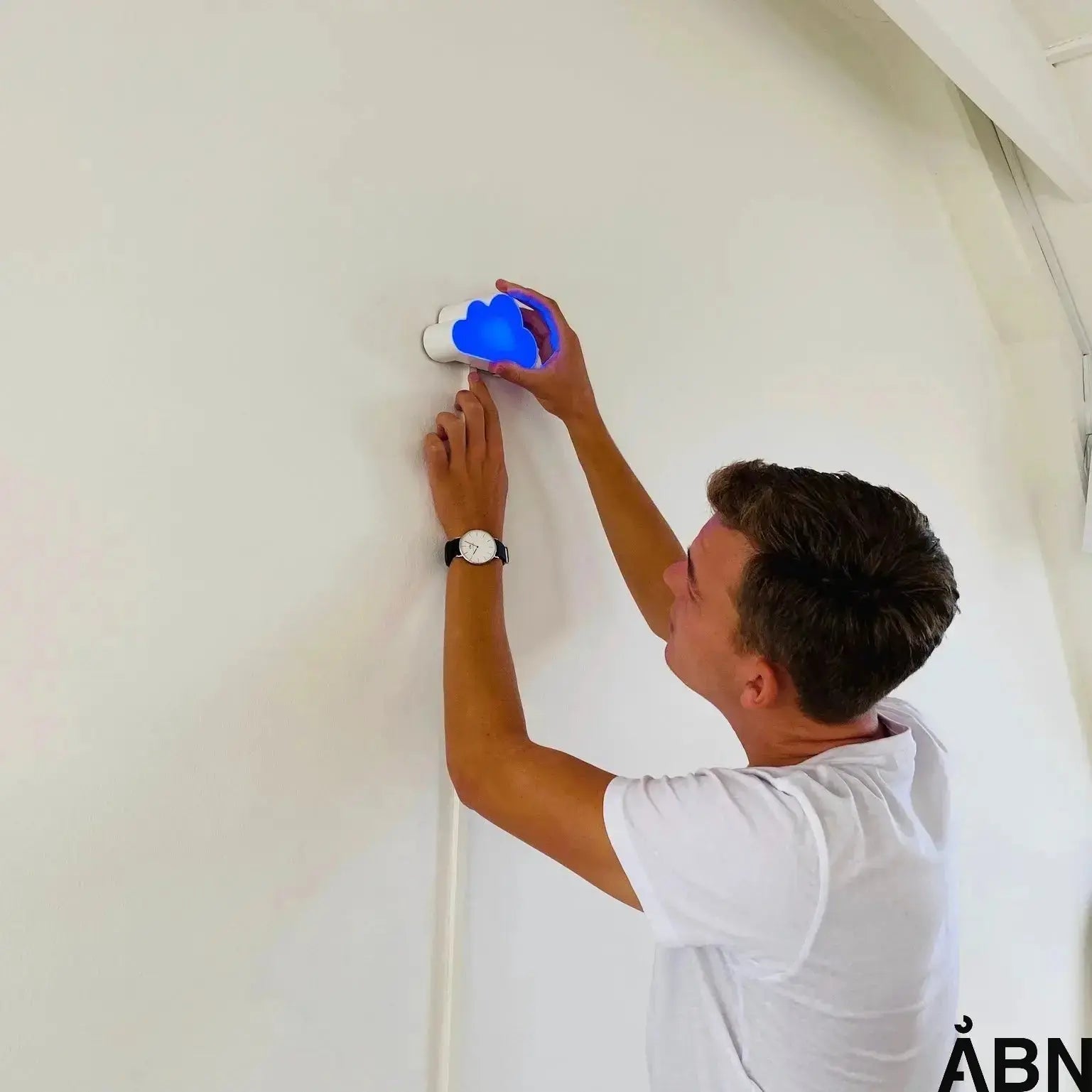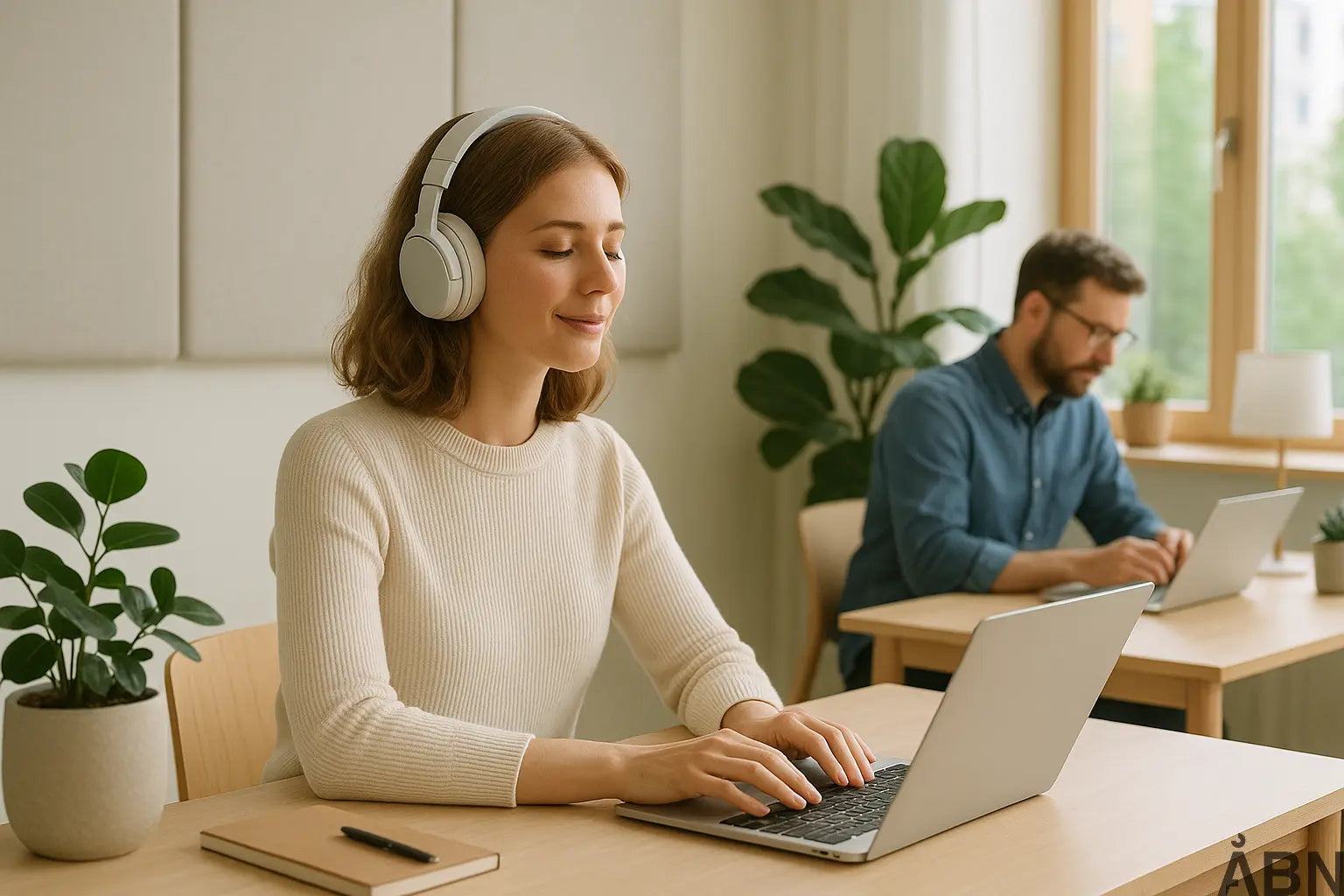These methods are best for noise reduction in the workplace
Imagine an office where phones are ringing, colleagues are talking, and the ventilation is constantly humming in the background. It may sound like a normal workday – but it is also an environment that can wear on both concentration and well-being. Noise reduction is therefore no longer a luxury, but a necessity for modern workplaces, schools and institutions.
According to the Danish Road Directorate and the Danish Environmental Protection Agency , noise has a documented negative effect on both health and productivity. And although much of the debate is about traffic noise and residential areas, there is good reason to focus on the interior of the workplace – because here too, noise can be a hidden energy thief.
Why is noise reduction important in the workplace?
Noise is not just annoying – it is also disruptive to the brain. When we are exposed to constant noise, the body's stress system is activated. This can lead to headaches, reduced concentration, sleep problems and, in the worst case, long-term health consequences. For children and young people in schools and daycare centers, noise can affect learning and well-being, while adults in offices and production risk reduced efficiency and increased error rates.
Research shows that simply improving the acoustics of a classroom can significantly increase student understanding and learning. The same is true in workplaces, where employees in noise-reduced environments report higher job satisfaction and lower stress levels.
A healthy indoor climate requires responsiveness
At ÅBN, we work to make the indoor climate as understandable as the weather forecast. This also means that we take noise seriously as an important part of the overall indoor climate. With our intuitive sensors and visual dashboards, you can gain insight into noise levels in real time – and act on it. Because when we can see what we hear, it becomes easier to do something about it.
The most effective methods for noise reduction
Noise reduction is not just about turning down the volume – it's about designing spaces that support calm, concentration and togetherness. Here are some of the most effective methods used in Denmark today:
1. Acoustic ceilings and wall panels
One of the most effective ways to reduce noise is to use sound-absorbing materials on ceilings and walls. These surfaces reduce the reverberation time so that sound is not bounced around the room. In open-plan offices, schools and institutions, this is essential for creating a pleasant sound environment.
A solution like Skyen from ÅBN combines acoustic attenuation with technology that visualizes the indoor climate. This means you get both peace in the room and insight into how noise and other factors affect the working day.
2. Zoning and room division
Noise often occurs when different activities are mixed in the same space. By dividing the office into zones – such as quiet zones, meeting zones and collaboration zones – you can minimize disruption. Using partitions, plants and furniture with acoustic properties can help create natural sound barriers.
Zoning is especially important in flexible work environments where employees work across functions and needs. It's about creating a balance between community and immersion.
3. Furniture with built-in noise reduction
Many modern office furniture items are designed with acoustics in mind. These can include high-backed sofas, telephone booths, or workstations with sound-absorbing surfaces. These elements act as small “sound pockets” where you can retreat and work undisturbed.
In schools and daycare centers, playhouses, book nooks and textiles can be used to create space within the room – and thus dampen noise without restricting children's movement and play.
4. Technological noise monitoring and behavioral changes
Technology is playing an increasingly important role in noise reduction. At ÅBN, we have developed sensors that continuously measure noise levels and visualize them on intuitive dashboards. This makes it possible to keep track of when noise increases – and why.
By combining data with behavioral insights, you can create a culture where employees and students learn to be considerate. For example, if you see that noise increases during lunch breaks or after 2 p.m., you can adjust accordingly. This way, noise reduction becomes a shared task – not an individual burden.
Read more about how data and behavioral change go hand in hand .
5. Building design and material selection
Noise reduction can be considered as early as the design phase of the building. By choosing materials with good sound-absorbing properties – such as wood, cork or specially developed acoustic panels – you can reduce the spread of noise. The location of rooms, ceiling height and ventilation also play a role.
In existing buildings, you can work with additional insulation, sealing strips and replacing hard surfaces that reflect sound. It's about making the room "softer" - both visually and acoustically.
Noise reduction in practice: Public and private initiatives
It is not only companies and institutions that work with noise reduction. Municipalities and state authorities are also focusing on the area. According to Aalborg Municipality's traffic noise action plan, the goal is to halve the number of noise-exposed homes by 2040. And at a national level, the Danish Road Directorate is working to install noise barriers that can improve conditions for up to 3,200 homes.
This shows that noise is not just a matter of comfort – it is a societal issue that concerns health, the environment and quality of life.
How do you know if you have a noise problem?
Noise is insidious. We often get used to it – until we experience how different a quiet room feels. That is why it is important to measure and document noise levels. With ÅBN's sensors, you can get precise data on how the sound level develops over time. This provides a solid basis for decisions – and for dialogue with employees, parents or students.
Want to learn more about how to document and improve your sound environment? Check out our technical documentation page.
Noise reduction is an investment in well-being
When we talk about noise reduction, we are really talking about creating a better environment for people. A quiet space is a space where we









